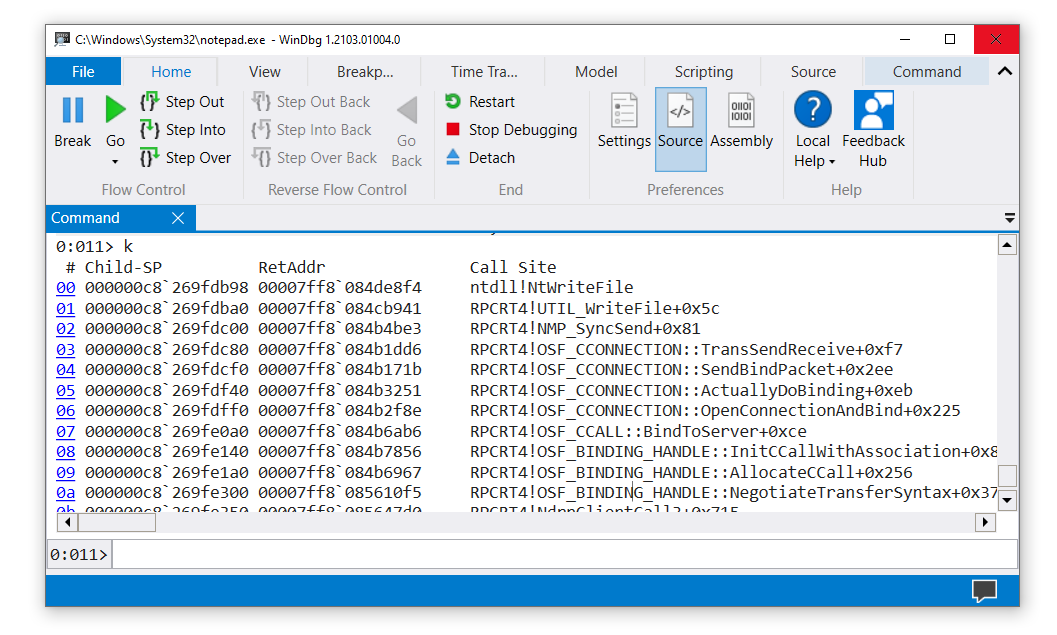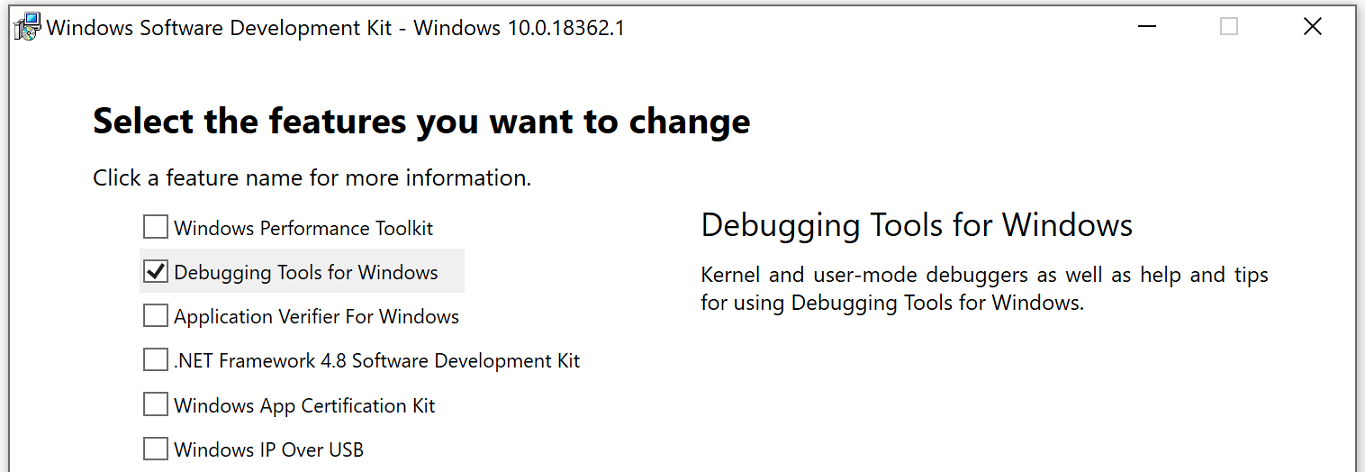

The main idea here is that you can record an actual live process (at a performance penalty) to later debug going back and forth in time. One of the most notable features of WinDbg Preview is so called Time-Travel-Debugging (TTD). In 2017 Microsoft announced new version of WinDbg called WinDbg Preview (aka WinDbgX).

Most commands can be used as is with all the included debugger front-ends.

#Microsoft debugging tools for windows. free#
Recent versions of WinDbg have been and are being distributed as part of the free Debugging Tools for Windows suite, which shares a common debugging back-end between WinDbg and command line debugger front-ends like KD, CDB, and NTSD. It can also be used to debug user-mode crash dumps. WinDbg can also be used for debugging kernel-mode memory dumps, created after what is commonly called the Blue Screen of Death which occurs when a bug check is issued. Microsoft has a public symbol server that has most of the public symbols for Windows 2000 and later versions of Windows (including service packs). This eases the burden of debugging problems that have various versions of binaries installed on the debugging target by eliminating the need for finding and installing specific symbols version on the debug host.
#Microsoft debugging tools for windows. code#
If a private symbol server is configured, the symbols can be correlated with the source code for the binary. WinDbg can automatically load debugging symbol files (e.g., PDB files) from a server by matching various criteria (e.g., timestamp, CRC, single or multiprocessor version) via SymSrv (SymSrv.dll), instead of the more time-consuming task of creating a symbol tree for a debugging target environment. Like the better-known Visual Studio Debugger WinDbg has a graphical user interface (GUI), but is more powerful and has little else in common.


 0 kommentar(er)
0 kommentar(er)
